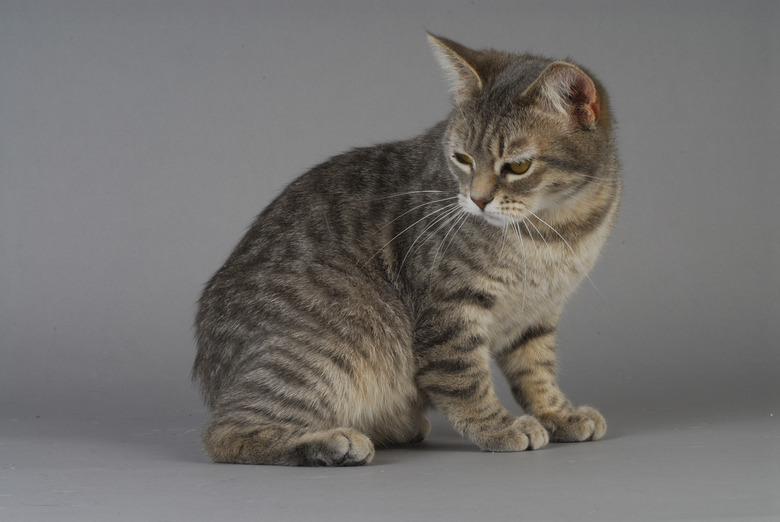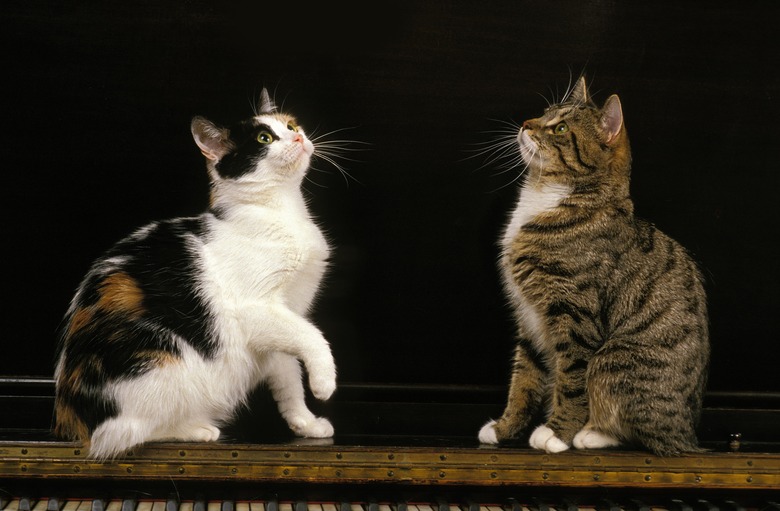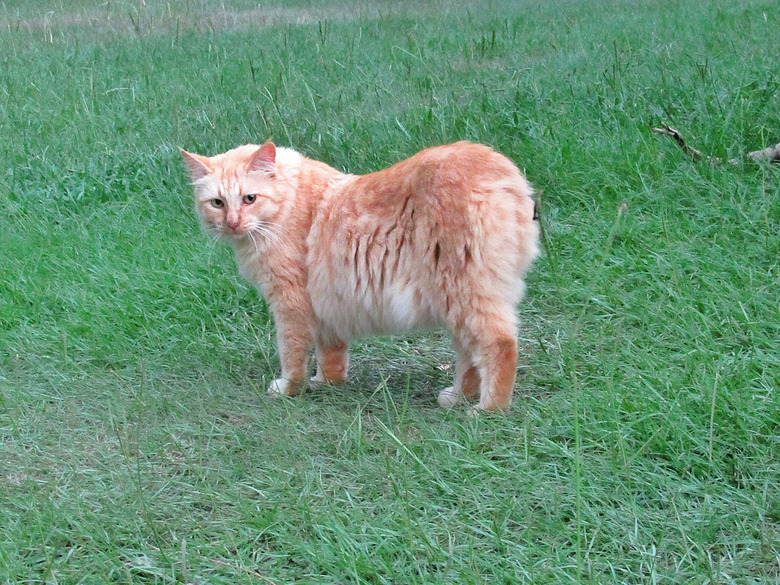Manx Cat Breed Characteristics
Manx cat quick facts
Manx cat quick facts
Length: 14 – 16 inches
Weight: Female 8 – 10 pounds, males 10 – 12 pounds
Lifespan: 12 – 16 years or more
Coat length: Short
Coloring: All coat colors and coat patterns
Grooming needs: Low
Friendliness: Breed alone is not an accurate predictor of individual cats' personalities. However, Manx cats are generally regarded as playful and loyal.
Manx cats are easily recognizable by their lack of a tail. You will see Manx cats in every color and pattern including calico, tortoiseshell, and tabby. These adorable cats have a round shape, from their round, tailless body to their round head and round eyes.
But the best thing about this breed is their personality. These medium-sized cats tend to be affectionate and loyal to their owner and they love to play, giving cat owners plenty of opportunities to laugh at their antics.
Manx cat history
Manx cat history
The Manx cat breed is believed to have originated in the Isle of Man, although they may also have come from parts of Great Britain such as England or Wales. The first image of these tailless cats dates back to 1810, although the breed is believed to be even older.
Some may share tales that the Manx cat lost their cat tails when it was cut off by Noah closing the door to the ark on a cat's tail. However, the reality is that the cats have a genetic mutation that prevents the development of the vertebrae in a normal-length tail. The trait persisted as the breeding population on the island was limited and inbreeding was common.
While taillessness is common for the Manx breed, it is important to note that some Manx cats do have a short, stub tail or even a full-length tail. Manx cats have different nicknames based on their tail length. For example, those who are completely tailless are called a rumpy or rumpy riser tail; those with a partial tail are called stump; ones with a short tail are called stubby; those with a long tail are called longy.
There is also a type of Manx with longhair. A long-haired Manx is called Cymric. The International Cat Association (TICA) recognizes the separate breed, and it has the same standard as the Manx cat. The Cat Fanciers' Association (CFA) considers Cymric to be a part of the Manx breed.
Manx cat personality
Manx cat personality
Manx cats love people and tend to be very affectionate. They want to be in your company, so if you frequently need to leave your cat alone for long weekends — this may not be the best breed for you. The cats also get along with children and pets. Manx cats can make a wonderful and memorable family pet.
Manx cats are calm and even-tempered, but that doesn't mean they don't like to play. They can be quite active and some describe the cats as clownlike. They are athletic and can turn quickly as they race through the house. They are also very intelligent. You may find your Manx cat opening doors and investigating the highest shelves.
Manx cats also have some dog-like behaviors. It is not uncommon for a Manx to play fetch. Some cats who have access to a garden will even bury their toys. While many Manx cats will share affection with all of your family members, it is not uncommon for a cat to bond more strongly with a single family member.
Manx cat lifespan and health issues
Manx cat lifespan and health issues
Manx cats that are in good health and receive excellent care can live for 16 years or more. They tend to be very healthy cats; however, there are some health problems to be aware of with this breed. The main issues are related to the complications of being a tailless cat. The tailless gene is a dominant gene, so a Manx cat only needs one copy to be a tailless Manx. Unfortunately, kittens with two copies of the gene do not survive.
One major concern is Manx syndrome, which is a type of spina bifida caused by the malformed or severely shortened vertebrae in the spine. Symptoms can vary depending on the type and severity of the spinal abnormality. Symptoms can include:
- urinary issues such as incontinence and other problems.
- abnormal limb function of a cat's hind legs can become either partially paralyzed or have abnormal gait
- rectal issues stemming from a megacolon and rectal prolapse
Unfortunately, there is no cure for Manx syndrome. However, you can offer supportive care to cats suffering from the syndrome.
Manx cat grooming and care
Manx cat grooming and care
Manx are shorthair cats with a double coat. The thick coat contributes to the rounded look of the breed and is very easy to care for. Simply brush the cat a couple of times per week to remove the loose fur. Cymric cats need more frequent brushing to keep their long coat free of tangles and mats. It is important to take care when grooming around the hind end — there may be exposed nerves where the vertebrae end.
As with all cats, be sure to trim their nails regularly and brush their teeth with veterinarian-approved toothpaste. It is recommended to feed Manx cats canned cat food twice per day to help keep them hydrated. Be sure to always give them clean drinking water as well.
Welcoming a new cat into your home
Welcoming a new cat into your home
Manx cats may have an even temperament, but it is still important to cat-proof your home. Put away anything that may harm your cat, including plants that may be dangerous to pets. While a kitten may not be able to reach a toxic plant on a high shelf, it won't be long before your Manx will develop the strength to reach high places.
Keep your cat confined to a single room when you first bring them home. As they grow more comfortable, you can open doors and allow them to access more of the home. Spend time with your new cat but don't force your cat to play or be petted. Instead, talk to them, offer to play with toys, and pet them only when they approach you. Always use positive reinforcement when training. Consider teaching them tricks to stimulate their mind and keep them focused on you.
Of course, you want to cuddle with your new pet. Though having patience will pay off as you develop a trusting relationship with your cat. If you have other pets in the home, introduce them slowly to make sure it is a positive experience for all.


